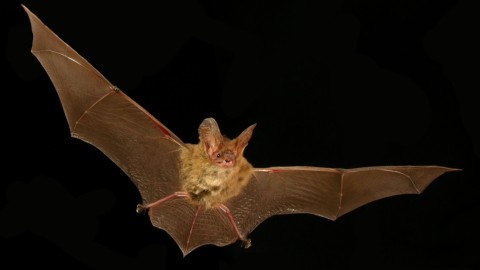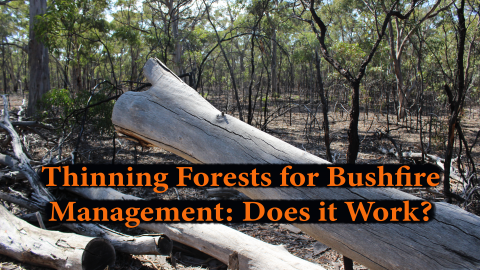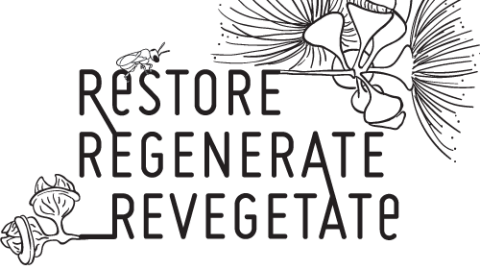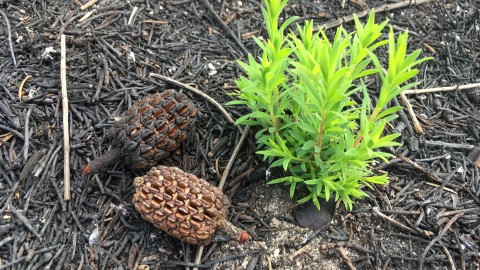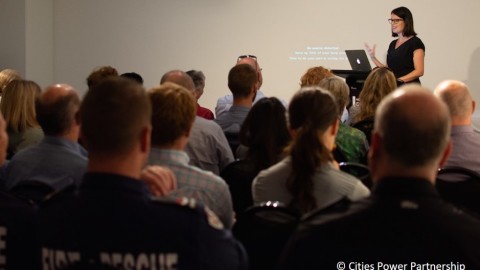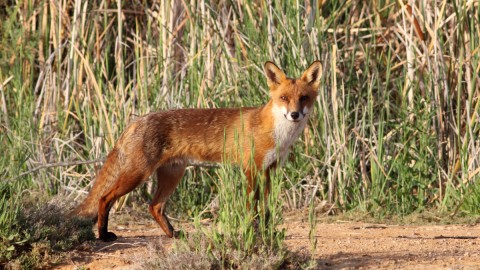NCC ecologist, Mark Graham recently helped run a Fire Ecology Field Day at Bonnells Bay, Lake Macquarie. This transcript highlights components of the discussion Mark led related to fire and the importance of protecting hollow bearing trees. The article is divided into two parts, a general introduction to the Bonnells Bay area, and a Q&A discussion on protecting hollow bearing trees. Links to other hollow bearing tree related articles are at the bottom of the page.
[Introduction – Bonnells Bay]
Mark: I’m the ecologist with both the Hotspots program and the Bushfire program at NCC. I spend about one day a week with the Bushfire program so I work around New South Wales. Here is a map of the area I will be talking about. I am just going to give a brief overview of the fauna in this part of the world.
So Bonnells Bay and the Morriset east penninsula juts out into Lake Macquarie and this area is a veritable treasure trove of biodiversity. The area is experiencing quite rapid residential and commercial development, there is lots of sprawl occurring here and for this particular peninsula it’s highly likely that that will have major consequences for its future biodiversity. Some areas have become effectively isolated; they have become islands of bushland that were previously very well connected.

Site of the NCC fire and ecology field day.
If you look at the map, most of you know that the white is residential and urban development, until some years ago this peninsula was very well connected and even as we speak it is being disconnected. That said it still supports a diverse, significant and valuable complement of native fauna, including many species that require large home ranges and the availability of abundant hollows within a landscape. That is a function of this area’s broader connectivity; it connects the Central Coast and Lake Macquarie, and the big bushland corridor extending toward Jilliby and the Watagan Mountains.
It contains extensive patches of coastal plain ecosystems, large parts of which are intact and support abundant hollows for species like Squirrel Gliders (Petauridae) and some of the large forest owls, as well as some of the rare and declining woodland birds that still exist in this landscape. The first site we are visiting today still has some amazing assemblages of woodland birds, some of which, for example the Varied Sittella (Daphoenositta chrysoptera), are the eastern-most known populations on the Central Coast.
Most of this landscape has been influenced by fire over aeons and very few areas of the landscape are fire sensitive. There are some small strips of warm temperate rainforest along some of the riparian strips leading back toward the coastal ranges. On the shores of Lake Macquarie there are patches of fire-sensitive saltmarsh and mangrove forest or mangrove swamps. Beyond that, the whole rest of the landscape is fire dependent and so many of the fauna species are strongly keyed into the process of fire.
We really want to stress through this workshop some of the most important habitat values within bushlands and at the top of that list are tree hollows. We can’t overstate the significance of tree hollows to many hundreds of our native fauna species, birds, bats, owls, possums, gliders, snakes, lizards, frogs, the list goes on and so many of our threatened fauna species are critically dependent upon hollows.
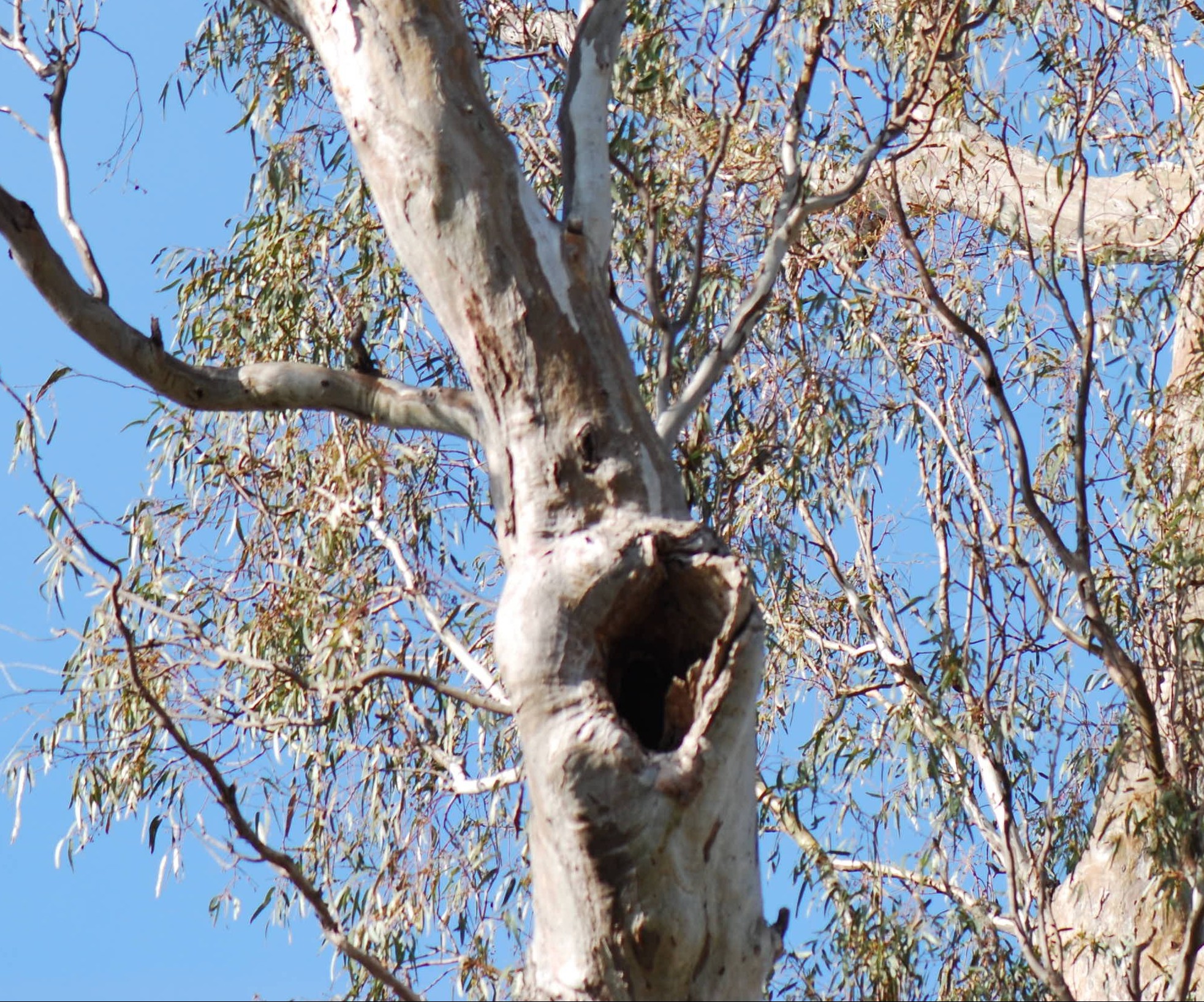
Large Eucalyptus hollows can take centuries to form. Source: Wiki Commons/Peter Halasz
In the absence of hollows they just can’t survive or function in the landscape. One of the really key messages, and one of the key things we are hoping to explore in the field, is recognizing where these really critically important habitats exist. We want to look at the types of management strategies that will retain these values, in particular, retaining hollows in these landscapes.
Large hollows in Eucalyptus take centuries to form and there is the potential, and we have got numerous examples from the work that we do around the State, where in a single instant hundreds of years of habitat development is lost and habitats are rendered unsuitable to a huge proportion of our wildlife through the loss of hollows. Clearance and human development is certainly a problem, but in our bushland reserves poorly-managed fire is a really concerning process; these are some of our last repositories of biodiversity, if they are not well managed and if our hollows aren’t protected and maintained there is a great risk that we will lose a significant proportion of our native fauna species.
[Q&A – Protecting Hollows]
Audience: When we try to plan burns we are aware of the importance of hollows, or some people are aware of it, but for anyone who does fire on the ground obviously candles burning up through the centre of large hollow trees is attracting the attention of the public and fire fighters think how are we going to solve this problem? We will cut it down. So I’m very keen to see if there are practical ways that we can save more of those trees from coming down. If you have relatively large areas you can’t go down and rake around every hollow bearing tree but in some cases I think we should be paying more attention to doing that sort of thing and controlling the amount of fire that goes in and burning around trees.
Mark: Look I agree wholeheartedly with all that. And a large part of the reason why were are here and we do what we do is to attempt to achieve a better outcome for the
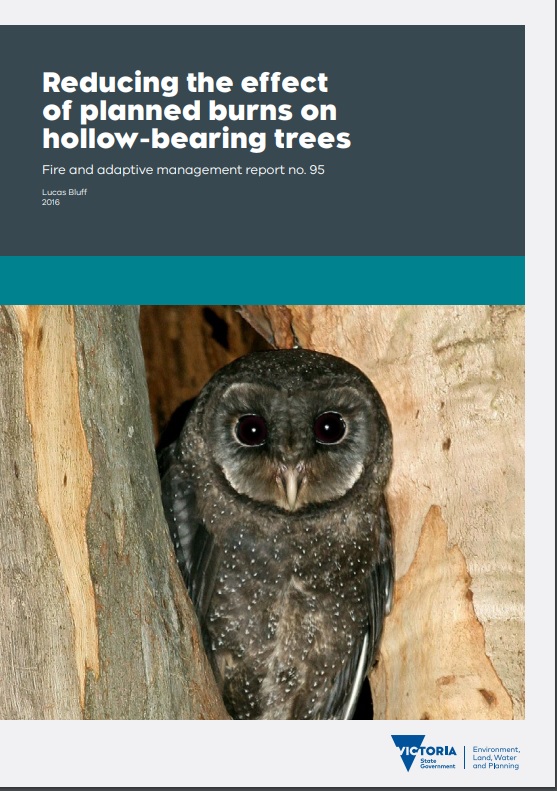
The Victorian Hollows Resource.
hollows in our landscapes. I guess when we’re dealing with relatively small reserves and private land parcels maybe there are more opportunities to more intensively manage those habitat resources and better protect them. At the broader scale maybe that’s not possible and achievable but the evidence is overwhelming. We have got to do better by our hollows.
Michelle Rose: In terms of doing better by our hollows. If you haven’t seen it already, we have a presentation about the research that was contained in this document at our last conference. It comes out of Victoria. Best bang for buck in terms of hollow protection, how wide you should rake around, which trees you should give priority to. There’s an extra prioritization there, the ones the community are likely to feel most strongly about, that might be another element to add. You can access that resource here.
Comment from audience: I cannot stress enough how much we need to have a simple one page primer for volunteers because they are the ones that are making the call on the ground. We can plan it all how we want and it can be quite disappointing when the plans are not followed how you would have liked them to.
Michelle: So a double-sided fact sheet with a couple of pictures and a bit of a poor outcome/good outcome.
Michelle: I wonder about the volunteer support that’s out there because we often have volunteers say we would have raked around if they had just asked us! So I think you might need to draw on your volunteers to get in and make a difference. I know the timing is always challenging but if you’ve got a good database and they are primed in some way to have that kind of knowledge, who invest their time then you may be able to get some extra resources to get works done that you thought were out of your budget or whatever.
Audience: In our council we have taken that approach, but the larger the scale of the burn the harder it is to make sure we are protecting every one of the trees.
Audience: Eight years ago when we started doing burns there was no protection of the habitat. Now we are on the ground from 6:30 am raking around the tree and the burn starts at around 10 am. I can’t remember how many trees we scraped around in Toronto but I think it was in the vicinity of 60 or so trees but we did not save them all.
Mark: Change can come in a number of ways, but one of the ways is through a broader appreciation and commitment to the protection of these critically important habitat resources. We are trying to plant seeds of awareness within rural landholders, reserve managers, agency reps and even policy and decision-makers in the political realm. We’ve got to do everything we possibly can for our hollows or we face a not too rosy future for so much of our wildlife.
[Resources]
The Victorian Department of Environment, Land, Water and Planning has a resource on managing fire and hollow bearing trees (mentioned above). Click here to access the resource.
Luke Smith & Emily Cordy from the Victorian Department of Environment, Land, Water & Planning gave a presentation based on the above resource about how to reduce the effects of planned burns on hollow bearing trees at our last annual conference. Click here for the transcript and click here to see the accompanying slides.
Dr John T Hunter from the University of New England, on behalf of Peter Croft, also gave a presentation at our last annual conference discussing the habitat features of open forests and woodlands in relation to disturbance by fire. Click here for the transcript and click here to see the accompanying slides.
The Forests scientific journal published an informative article about the effectiveness of different types of man-made hollows with material and methods outlined. Click here to download the PDF.
The ABC posted an interesting article about the Gold Coast City Council’s outstanding success with chain-saw hollows. Click here to access the article.

